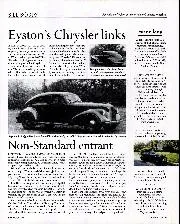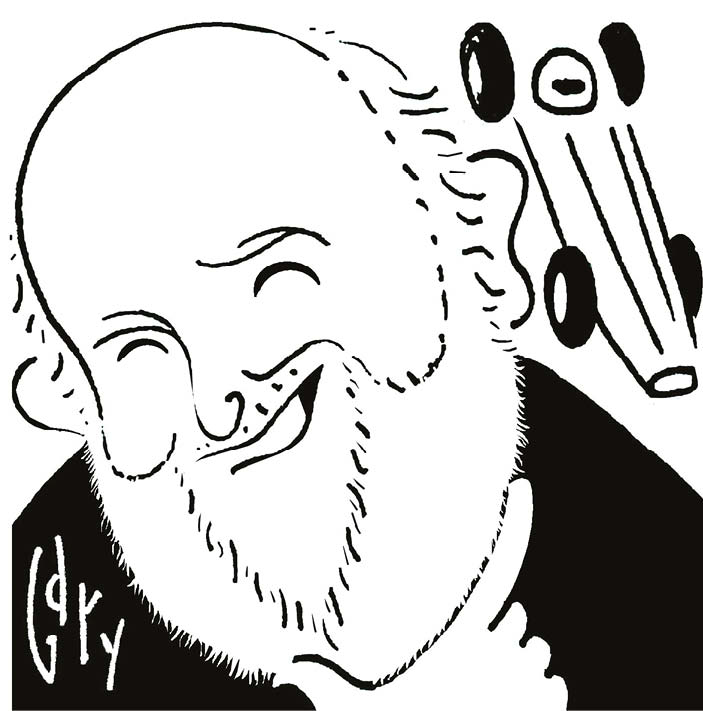
Non- Standard entrant
Some time back I marked out a standard as an unusual make to be raced at Brooklands. But, would you believe it, another joined in, in 1927. This one was…

On the Monday following the German GP the Renault Sport F1 team’s weekend went from bad to worse. Having lost both cars from the race, the next day one of the team’s transporters crashed off the motorway near Gyor en route to the Hungarian GP outside Budapest. Thankfully its driver escaped major injury.
It’s quite a long time since a leading Grand Prix team experienced such a mishap, but in pre-motorway days such upsets were quite common. One of my early motor racing loves was the HWM team. Headed by George Abecassis and John Heath it earned respect within Continental Europe for campaigning a full team of cars driven by some really good promising young hands, such as Stirling Moss, Peter Collins and Lance Macklin.
This was at a time, 1950-52, when the immensely over-hyped BRM team became something of a laughing stock due to repeated failure to fulfil race entries. In contrast HWM would relentlessly fight all manner of disasters to contest every Continental race entered.
Early in 1952, three new HWMs were despatched from Walton-on-Thames to the Pau GP in southern France for Macklin, Collins and French rent-a-driver Yves Giraud-Cabantous. Walton to Pau was a tough drive, but Heath directed chief mechanic Frank Webb to detour some 600 miles to collect new ZF limited-slip differentials from the Friedrichshafen factory in southern Germany. Their transporter was a converted ex-Oxford City AEC bus, in which – once having collected those new diffs – they then faced another 800 miles to Pau. The plan worked reasonably well, apart from coasting downhill in neutral – both to gain speed and save expensive fuel – proving to be a bad idea. Coasting rapidly the AEC refused to re-engage a gear. Mechanic Len Hayden recalled a major fright battling with that gearbox on a long incline into Nancy. The AEC won so HWM’s finest found themselves streaking through the city centre – in neutral – at around 70mph. Fortunately, 1952 Nancy traffic around 5am was sparse…
Safely arrived at Pau, those new ZF diffs were fitted to the cars, and Macklin ran second in the race – splitting the works Ferraris – before a brake pipe split. Giraud-Cabantous spun off with brake problems, which also afflicted Peter Collins’ new car. On the grid, his was found to have a leaking brake pipe. It was disconnected and hammered flat, so he took the start with only three working brakes, Heath intent upon earning the start money regardless.
The next race was 350 miles away, at Marseilles. En route, near Sète, the team stopped for a swim. Team junior ‘Cass’ Castell had been badgering Webb to drive. Frank finally relented, and initially the lad did well. But then a mosquito – or hornet – buzzed into the hot, fume-filled cab. Cass took a swipe at it, clipped the sandy verge and the AEC ploughed off into deep sand, struck some half-buried rocks, and its entire front axle was smashed back, the engine’s sump shattered. The inside of the truck “looked more like a scrapyard than a racing team”.
“To avoid ramming the Fordson, he swerved, but the tow chain snapped”
Webb found a telephone and called the team’s Marseilles hotel. Collins took the call, recruited Macklin and the pair drove 120 miles to the rescue in a Ford Consul. Macklin was fluent in French and persuaded a local garagiste to lend two small pick-ups to carry two of the cars, plus tools and spares, while Webb drove the third. Formula 2 single-seaters did not feature lights, and he arrived in Marseilles near 11pm, and actually stopped to ask a couple of Gendarmes the way to the hotel. To their undying credit they not only pointed him the right way… but push-started him, too.
The cars arrived on the Marseilles starting grid, although only one would finish, seventh. Over the following days the boys ironed-out the AEC’s damage, and the undaunted HWM crew began the long drive home…
Later that year – after Collins had finished fourth behind the Ferraris in the La Baule GP on the Brittany coast, Heath ordered the crew back to Walton to prepare the cars properly for the Italian GP, two weeks later. But some 75 miles from Calais, near Doullens, the AEC’s back axle failed. Webb phoned Walton and asked his colleague Sid Yorath to bring out the old transporter, a Fordson, to tow them to the ferry. It arrived and a chain was connected to the AEC to tow it. But another big hill caught them out. The silent AEC ran out of brakes. Webb tried to avoid ramming the Fordson’s tail. He swerved to overtake. The chain pulled taut, and snapped. Big transporter punted small transporter aside. The Fordson struck a kerb, and toppled onto its side. The AEC careered downhill; narrow bridge at its foot. And the AEC was dragged to a halt jammed diagonally between the parapets. A recovery truck was summoned from Amiens.
They dragged the Fordson upright, popped the AEC from the bridge like a cork. The HWM lads judged both driveable, cobbled a rigid tow bar and headed to Calais. The AEC’s back axle was replaced, two freshly-prepared cars loaded, then Webb headed off again – 850 miles to Monza, and the Italian GP – where neither car qualified…
HWM definitely had happier years than 1952, as Renault Sport has definitely had happier years than 2019.
Doug Nye is the UK’s leading motor racing historian and has been writing authoritatively about the sport since the 1960s